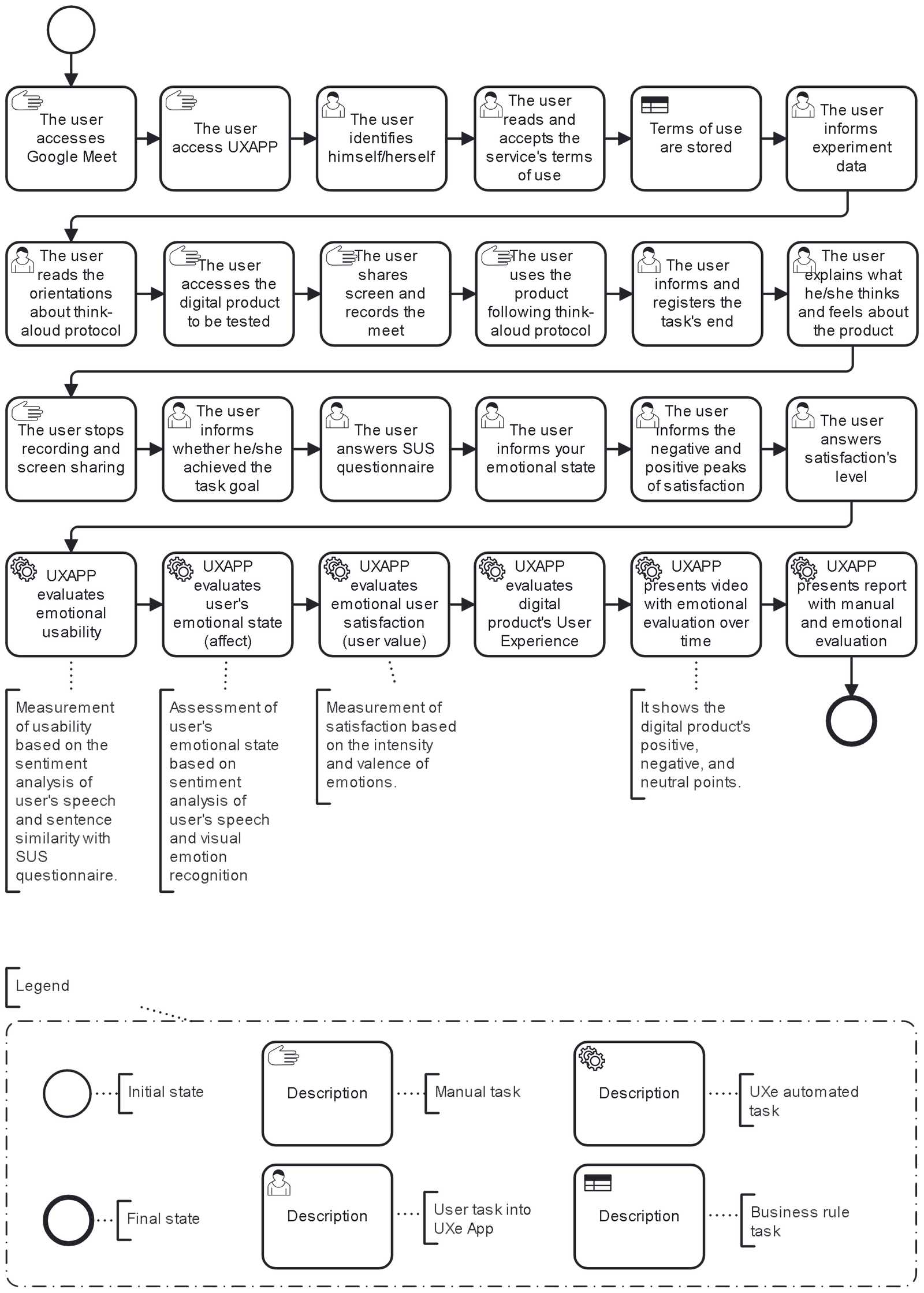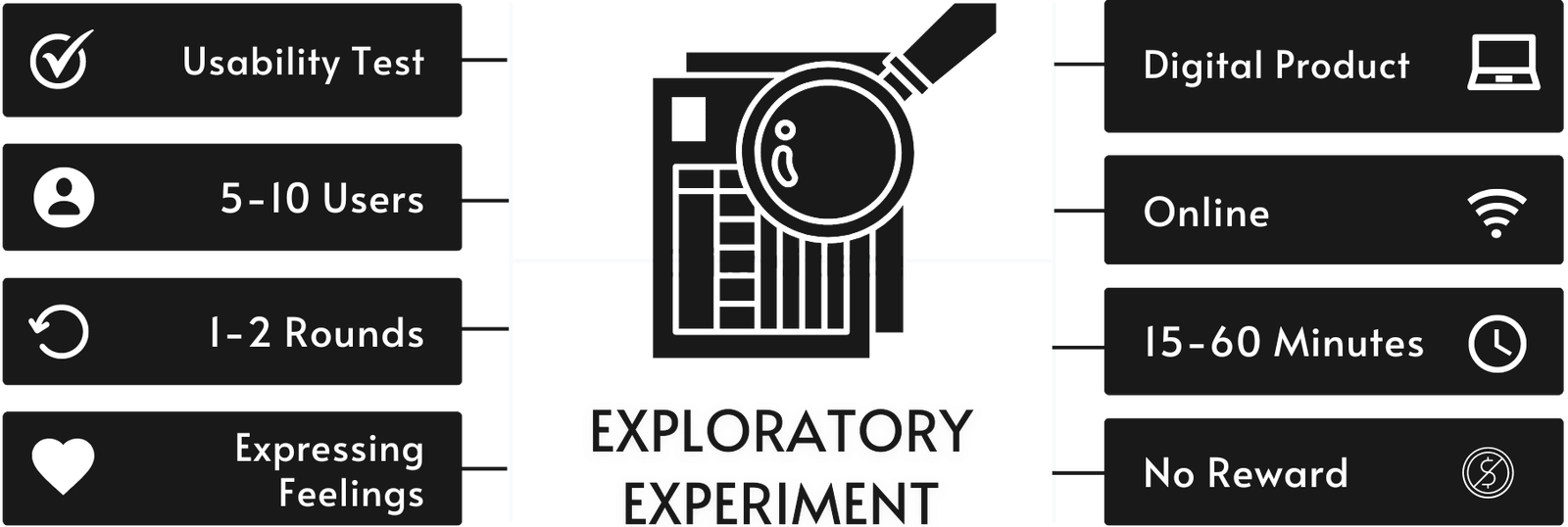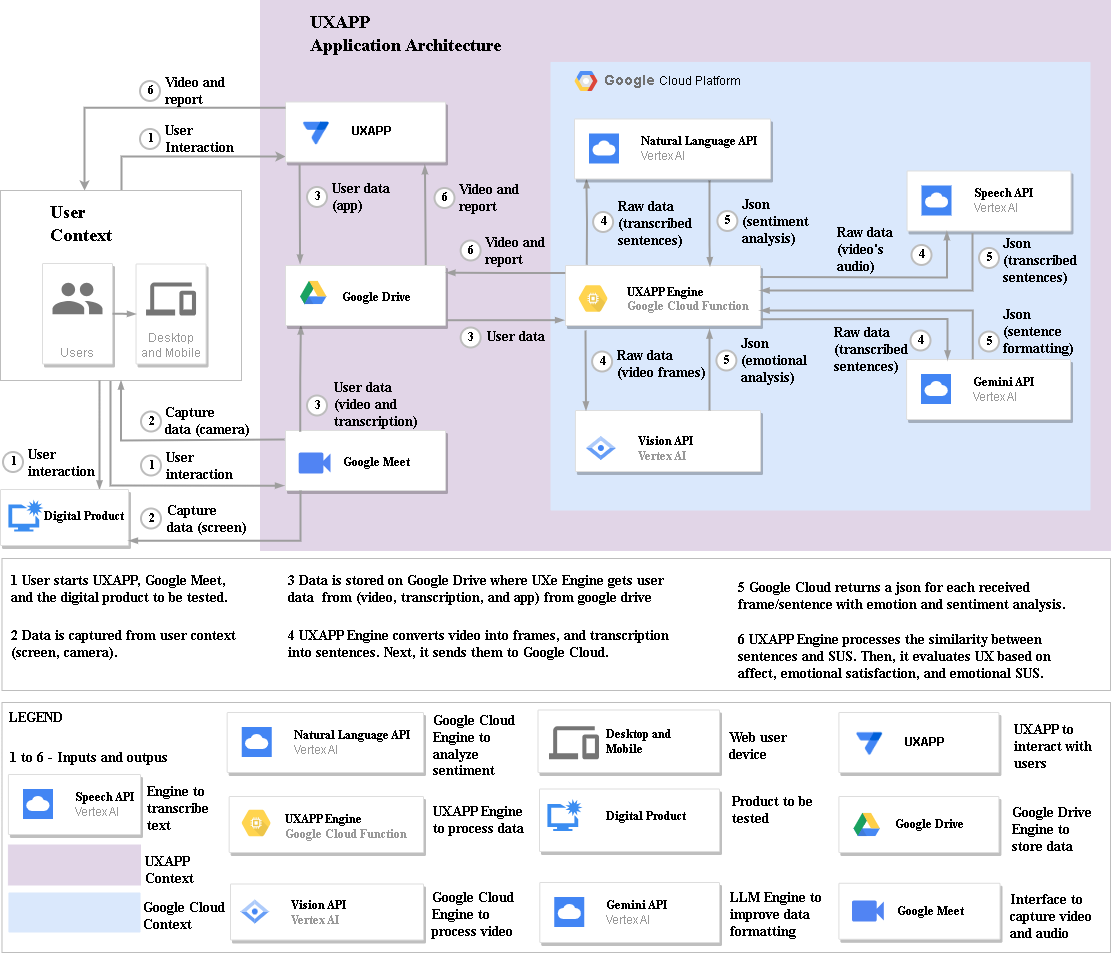Fill the form to proceed
If you want to use this site, you need to provide this information.

UXAPP automatically evaluates user experience (UX) based on three elements: usability, effect, and user value.
It uses emotion recognition obtained from audio and video recordings of the user while they use a web or mobile digital product.
The user experience (UX) and its elements are evaluated based on the user experience evaluation model proposed by [anonymized].
This model suggests a scale for evaluating each UX element and how it relates to emotion recognition obtained from the user’s audio and video.
The model is composed of a scalable and repeatable process, an exploratory experiment, and an application architecture with the web app, AI component, and UX evaluation component.

The User Experience (UX) Evaluation Model is based on over 60 references, but the main framework is provided by the work from Park et al. [1], from which we extract the image above, but also the works from Brooke [2], and Likert [3].
[1] Park, Jaehyun, Sung H. Han, Hyun K. Kim, Youngseok Cho, and Wonkyu Park.
Developing User Experience Elements for Mobile Phones and Services:
Survey, Interview, and Observation Approaches, July 2013.
ISSN 10908471. xii, 3, 18, 19, 22, 28, 50
[2] Brooke, John:
SUS: A quick and dirty usability scale
Usability Eval. Ind.. 189, 1995.
https://www.researchgate.net/publication/228593520. 13, 21, 22, 28
[3] Likert, Rensis:
A technique for the measurement of attitudes.
Archives of psychology, 1932. 10, 21, 54.
User Experience, in the context of products and services experiences, can be defined as “an overarching experience that consists of all aspects of users’ interaction with a product or service” [1].
User experience is related to the “experience context”, a set of elements that form the experience. If any element of this set changes, then the experience will be different. This set is made up of person, event, environment, and point in time [2].
It can be said that “an individual experiences an event (i.e., action) through a specific medium at a particular point in time”. [2]. The user experience is composed by [1]:
[1] Park, Jaehyun, Sung H. Han, Hyun K. Kim, Youngseok Cho, and Wonkyu Park:
Developing User Experience Elements for Mobile Phones and Services:
Survey, Interview, and Observation Approaches, July 2013.
ISSN 10908471. xii, 3, 18, 19, 22, 28, 50
[2] Gahler M., Klein J.F., Paul M.
Customer Experience:
Conceptualization, Measurement, and Application in Omnichannel Environments
(2023) Journal of Service Research, 26 (2), pp. 191 - 211.
DOI: 10.1177/10946705221126590
The following image illustrates the User Experience (UX) Evaluation Model Experiment.

The following image illustrates the User Experience (UX) Evaluation Model Process.

The model uses Google Cloud to implement UXAPP. The frontend makes use of APPSHEET environment, the UXAPP engine runs as a Google Function API and it consumes several AI products. Google Workspace tools supports UXAPP with user interface services. The following image illustrates the User Experience (UX) Evaluation Model Architecture.



